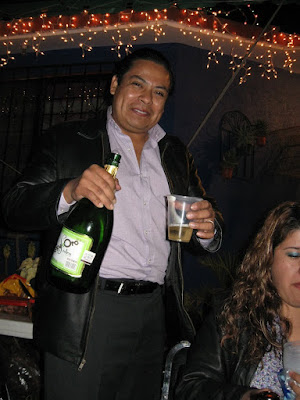 When I began this blog, it was for the sole intent to continue keeping a journal of my travels. I've been keeping a journal of varying sorts for more than 30 years. I've mostly used little spiral bound notebooks that will fit in my pocket, which are perfect for the kind of traveling Stuart and I do: lightly encumbered. Other journals are kept in beautiful, hand-made books I bought, my own hand-made books, and some in pads of decent drawing paper I've bought in art supply stores. I keep a journal of daily notes about everything, written in small books of lined paper; a journal of travels (by blog, when possible); a garden journal (in ring-binders, complete with garden plans, pictures and comments); a studio notebook with sketches and reminders of on-going projects; a journal of things that people have said that make me want to write it down!; a journal of ZenTangles (google it); etc. I'm delighted that my younger grand daughter keeps a journal, sometimes, too. We occasionally write or draw in each others journal. But, I'm rambling, as always. The blog version of my travel journal began just to keep friends and family informed, if they wanted to be, of what I'm seeing and experiencing when we're away. The computer is responsible for all this! I never thought that there would be a list of 'followers'. A couple of years ago, when we were in Merida, Yucatan, I began to get comments from total strangers, and was startled. It was fun to have pen pals, and I learned lots about the area from some of those pen pals.
When I began this blog, it was for the sole intent to continue keeping a journal of my travels. I've been keeping a journal of varying sorts for more than 30 years. I've mostly used little spiral bound notebooks that will fit in my pocket, which are perfect for the kind of traveling Stuart and I do: lightly encumbered. Other journals are kept in beautiful, hand-made books I bought, my own hand-made books, and some in pads of decent drawing paper I've bought in art supply stores. I keep a journal of daily notes about everything, written in small books of lined paper; a journal of travels (by blog, when possible); a garden journal (in ring-binders, complete with garden plans, pictures and comments); a studio notebook with sketches and reminders of on-going projects; a journal of things that people have said that make me want to write it down!; a journal of ZenTangles (google it); etc. I'm delighted that my younger grand daughter keeps a journal, sometimes, too. We occasionally write or draw in each others journal. But, I'm rambling, as always. The blog version of my travel journal began just to keep friends and family informed, if they wanted to be, of what I'm seeing and experiencing when we're away. The computer is responsible for all this! I never thought that there would be a list of 'followers'. A couple of years ago, when we were in Merida, Yucatan, I began to get comments from total strangers, and was startled. It was fun to have pen pals, and I learned lots about the area from some of those pen pals.Now, I see two more names on the 'followers' list, names I don't know. The reassuring thought is that I'm not forcing anyone to read; you can come here when you want, and just look at the pictures!
I met the man in the photo late yesterday afternoon on Garcia Vigil. He had a piece of plastic stretched, painting-canvas-style, and was STITCHING pieces of colored plastic bags to create the street scene. I would buy this from him, if I could figure a way to get it home! I love it, everything about it. Working with what he had on hand, plastic bags are everywhere. I hope to see him again today, to see the finished 'painting'.
The blog will be on semi-hiatus for the next month. Stuart and I said, when we left the USA, one day we'd decide it is time to go to Guatemala, and we'd buy a bus ticket. Well, we decided yesterday, and bought tickets to Juchitan on a Tuesday morning bus. It's a 5 hour first-class bus ride, and we'll spend the night there, catch another bus to the Chiapas/Guatemala border and spend another night. From there, we'll walk across the border (I think), and catch another bus to...? I'm not taking the laptop with me, too much to haul. I'll check in at internet cafes, when I can. Right now, we're off to the La Noria mercado, for almuerza, and probably a nieve afterwards. Just rambling.







































